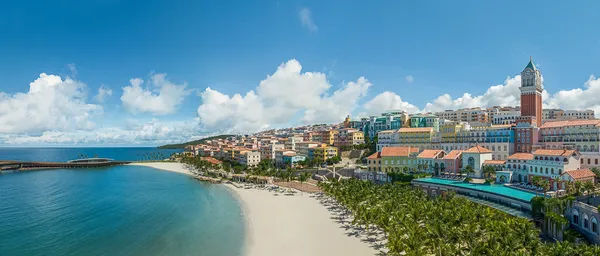 Brandinfo
Brandinfo


|
The Việt Nam Maritime Corporation (VIMC) has recorded encouraging achievements in the first nine months of this year.
In the first three quarters of 2021, 98.2 million tonnes of cargo were handled at VIMC's seaports (up 16.8 per cent from the same period last year), generating revenue of more than VND5.1 trillion, including a pre-tax profit of VND1.55 trillion, up nearly 50 per cent from the same period last year. Hải Phòng, Qui Nhơn, HCM City and Đà Nẵng ports exceeded operational targets, while joint venture ports in the southern part of the country reported high profits, accounting for 35 per cent of the Cái Mép - Thị Vải port group’s container market share.
Three Vietnamese ports were recently ranked among the top-50 seaports in the world by the World Bank in collaboration with IHS Markit; Cái Lân Port in Quảng Ninh Province was ranked 46th, Hải Phòng Port 47th, and Cái Mép Port in Vũng Tàu 49th. Two of the three ports are members of VIMC.
Hải Phòng Port is the largest facility of its kind in northern Việt Nam. Its upgraded capacity is able to receive ships with a tonnage of 100,000-150,000 tonnes, compared with only 40,000 tonnes before its modernisation.
The Port of Hải Phòng Joint Stock Company plays an important role in the direct transport of cargo containers to American and European ports.
The port's improved capacity has increased Việt Nam's competitiveness in seaport operations and investment, especially foreign direct investment attraction. Hải Phòng Port’s average cargo stevedoring capacity has increased to 50 containers per hour, reaching 60 containers per hour at peak times. Container ship release has been shortened to an average of 23 hours. The port has received container ships of almost 2,800TEU (tonne equivalent unit).
Hải Phòng is one of 20 seaports in Việt Nam capable of receiving large ships from all continents, while the Port of Hải Phòng Joint Stock Company has become the largest container operator in northern Việt Nam with a capacity to handle over one million TEU of cargo containers per year.

|
Cái Lân International Container Terminal (CICT) is one of the first seaports in Việt Nam to be equipped with advanced technology, making its cargo handling capacity higher than other ports and increasing its competitiveness. The 594-meter long CICT is equipped with six gantries and is capable of handling one million TEU of cargo container per year. Wharves 2, 3 and 4 at Cái Lân Port have a 14-hectare storage area equipped with Post Panamax berth cranes with a maximum capacity of 30 containers per hour.
The CICT’s cargo container handling capacity has reached 33-35 containers/crane/hour on average and 40 containers/crane/hour at peak times. The release of a 5,000TEU ship lasts just over one day.
Under its deep-water port development strategy for the southern region, VIMC has attracted investment for and put into operation the SSIT, CMIT and SPPSA ports (Vũng Tàu), and Hiep Phuoc and Tan Thuan ports (HCM City).
VIMC and Saigon Port recently suggested a container port investment project in HCM City’s Cần Giờ District, expected to turn Saigon Port into a leading seaport and logistics service centre capable of serving import, export and transhipment of goods like the ports of Singapore, Hong Kong (China), and Tanjung Pelepas (Malaysia).
The ranking of three Vietnamese ports among the world’s top-50 seaports has helped improve the competitiveness and attractiveness of Vietnamese seaports, contributing to opening more service routes and improving cargo handling capacity and opening up development opportunities for VIMC and its member enterprises.
By VEN









